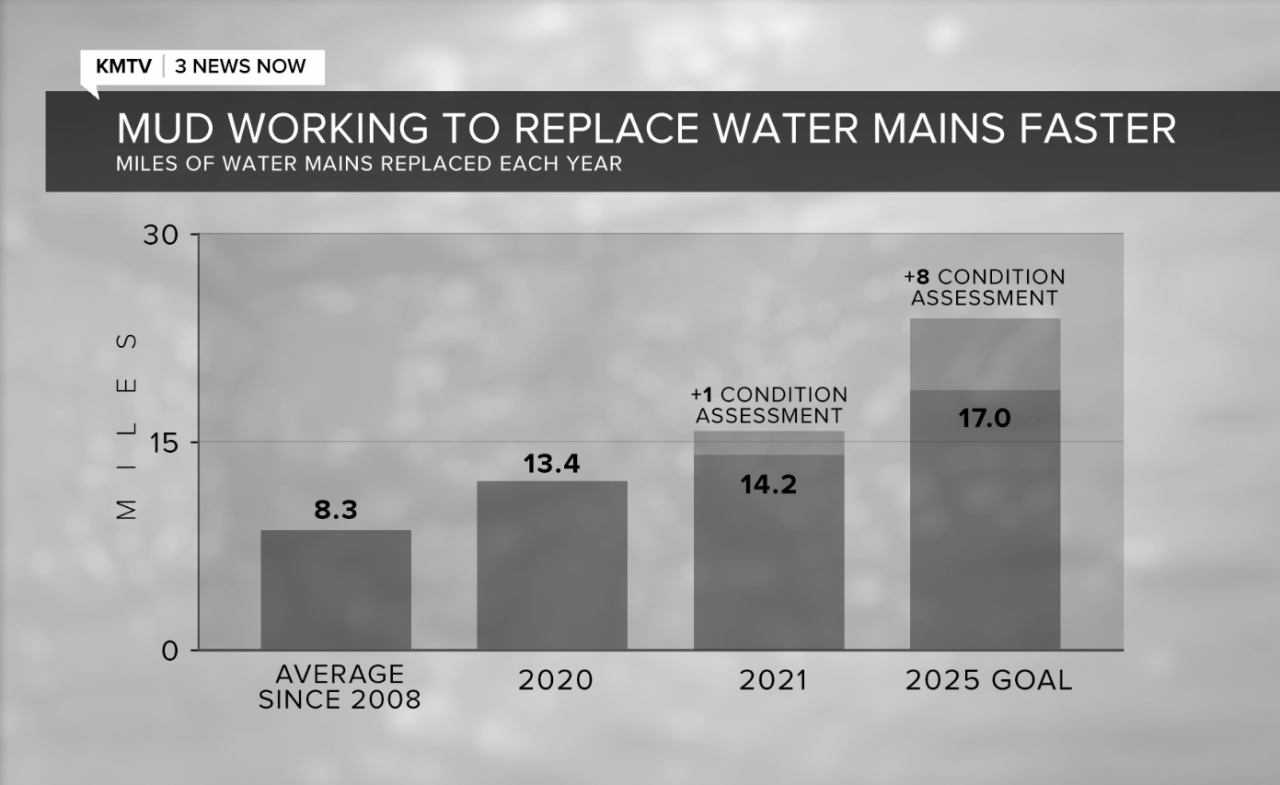OMAHA AND WAHOO, Neb. (KMTV) — Residents of Jackson, Mississippi, learned firsthand that water flowing out of our faucets isn't something to take for granted. But the latest crisis, days without water pressure, isn't the first time the city has had water problems.
In addition to flooding, many point to weak water infrastructure in the city.
But across the country, water infrastructure is less than ideal, experts say. The number of water main breaks has been on an upward trend.
The American Waterworks Association calls it the "replacement era." Much of the nation's water infrastructure has lived a long life, but it's not lasting forever. The nation was "chronically underinvesting" in infrastructure, a Value of Water Campaign and American Society of Civil Engineers report says.
"We have inherited really aged and outdated infrastructure," said Ryan Hurst, head of utilities in Wahoo. "It's time to make some investments in replacement."
But Hurst did say that those efforts are boosted by the federal infrastructure bill passed last year. He's made an application for funds that he expects will be partially forgiven.
"We have seen and had our fair share of water main breaks here in Wahoo," he said. "And so we're trying to take those corrections and prevent further failings."
Water main breaks are more and more common in Omaha, too. The area Metropolitan Utilities District (MUD) covers has experienced a steady increase over decades. In 2021, there were 566 water main breaks.

MUD has a plan to "get ahead of the curve," said Micheal Koenig, vice president of water operations.
Part of the plan: increase how many miles of water main are replaced each year. Since 2008, the utility has an average of 8.3 miles of water mains replaced each year. But it was much higher in 2020 and 2021: 13.4 miles and 14.2, respectively. It aims for 17 miles of replacement and eight miles of condition assessment by 2025.

Hurst and Koenig, both members of the American Waterworks Association Nebraska Section Board, said weighing infrastructure replacement with keeping rates low is a delicate balance.
"Keeping those (rates) affordable yet challenging ourselves to be ever mindful and get these projects and improvements done for the lowest cost possible is in our and the ratepayers' best interest," Koenig said.
Download our apps today for all of our latest coverage.
Get the latest news and weather delivered straight to your inbox


